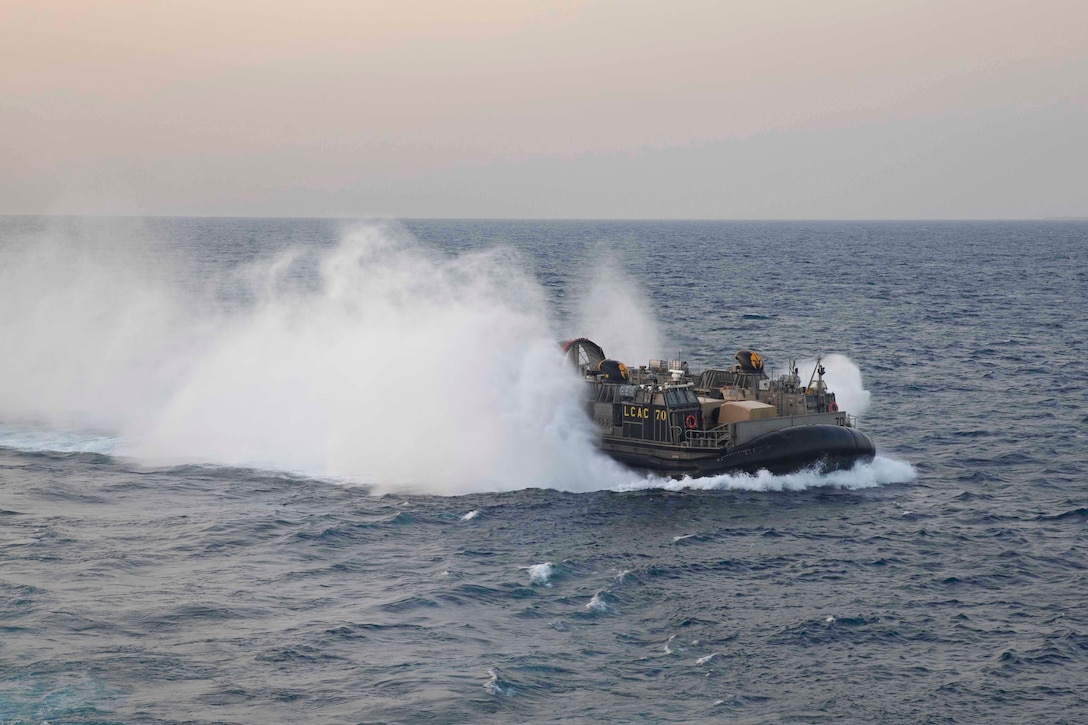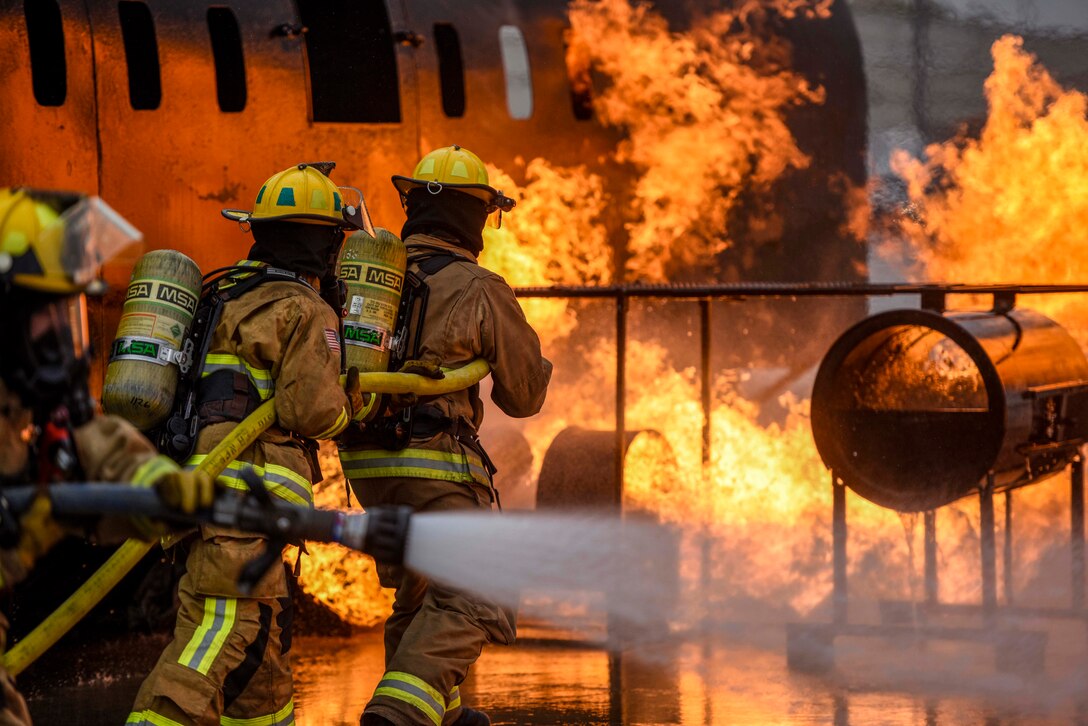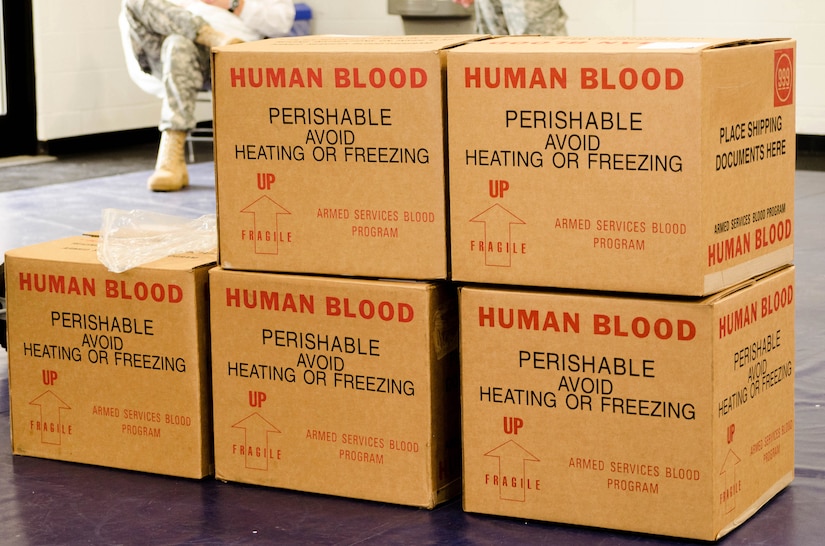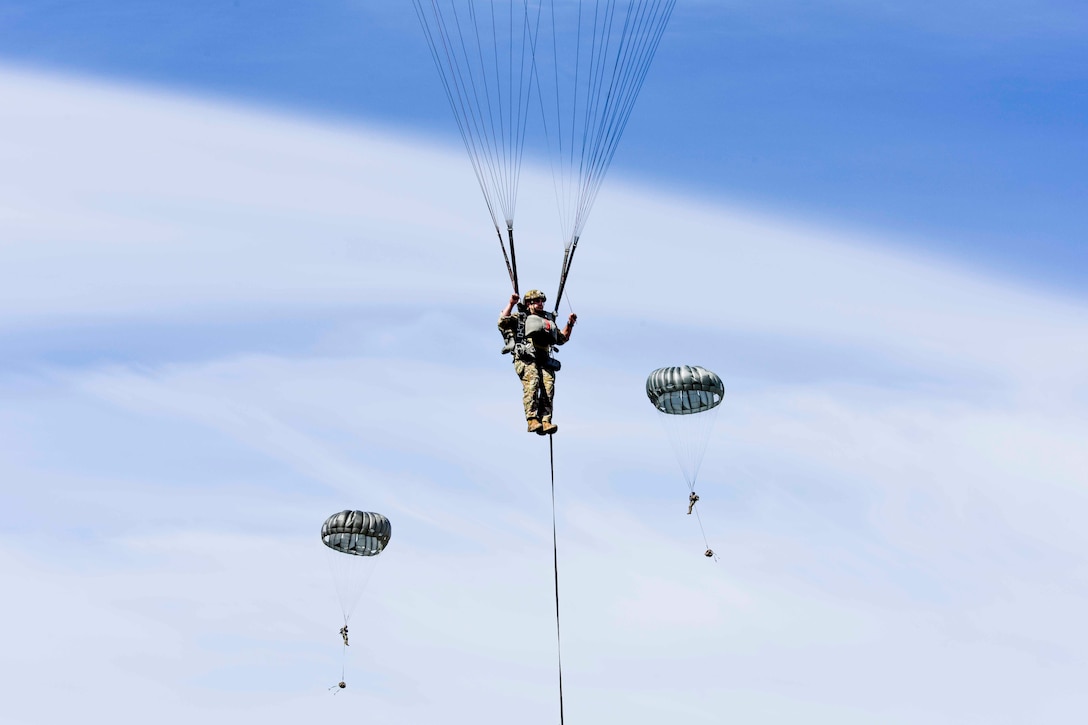An air-cushioned landing craft operates in the Persian Gulf, May 27, 2020, after exiting the well deck of the USS Bataan.
Providing up-to-date information, news and original content on American Military issues.
Friday, May 29, 2020
Flight Prep
Air Force Senior Master Sgt. Ryan Clauss prepares for takeoff at Eielson Air Force Base, Alaska, May 21, 2020.
Fighting Fire
Firefighters assigned to the Ohio National Guard extinguish controlled fires during an exercise at the Toledo Express Airport in Swanton, Ohio, May 19, 2020.
DOD Launches Effort to Collect 8,000 Units of COVID-19 Convalescent Plasma
The Defense Department has begun an effort to collect 8,000 donated units of plasma from patients who have recovered from COVID-19 to support the development of an effective treatment against the disease.
"We may want to ask you to stick your arm out and donate blood," Army Gen. Mark Milley, chairman of the Joint Chiefs of Staff, said in a virtual town hall yesterday. "What that can then do is help others who are severely ill, and if we can do that, then we'll be on a good path toward getting some really powerful therapeutics."
Donations will be accepted at 15 Armed Services Blood Program centers across the continental United States, and in Hawaii, Guam and Germany. (A complete list of centers accepting donations appears at the end of this article, and is available online.)
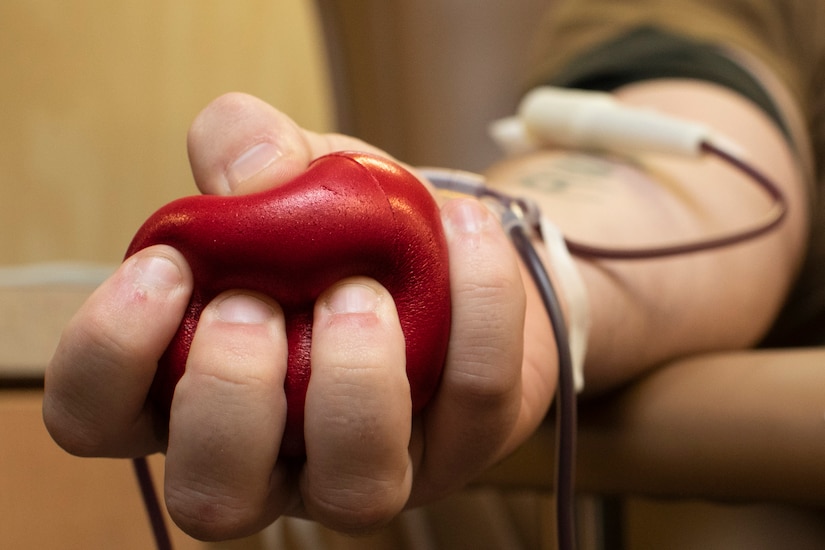
"Our goal as a lifesaving program is to always provide a safe and ample supply of blood products. The need is now," Taylor said. "We are calling for all who are healthy, able and eligible, to donate today to help us all stand mission ready and save lives."
Why Convalescent Plasma is Collected
When a person contracts SARS-CoV-2, the virus that causes COVID-19, their immune system creates antibodies to fight the virus. These antibodies are found in the plasma, the liquid part of blood, Taylor explained.
Plasma with infection-fighting antibodies is called convalescent plasma, she said. Through the blood donation process, this plasma is collected from a donor who has recovered from COVID-19 and may be transfused into a sick patient who is still fighting the virus, if they qualify for this type of treatment. This may boost the immune system of the patient and help with the recovery process, Taylor said.
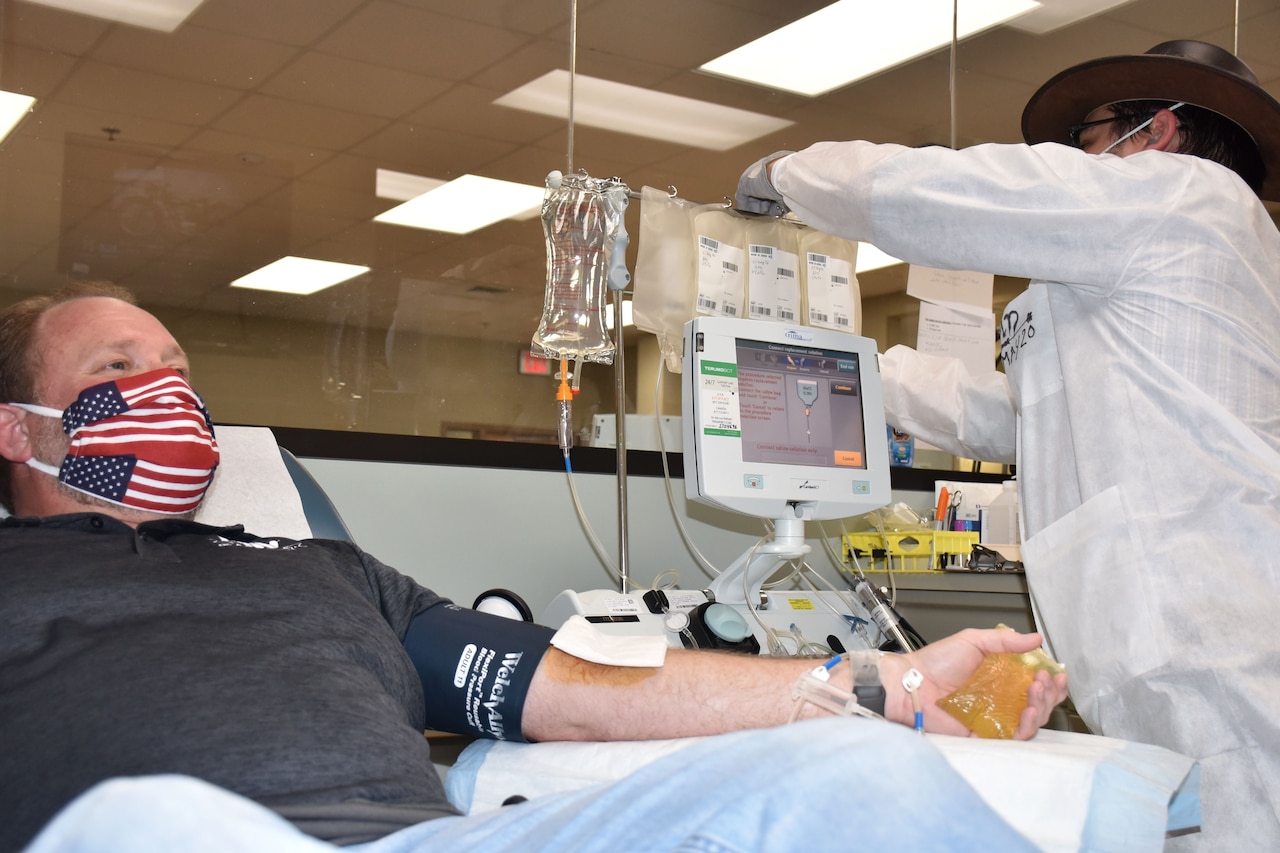
The collection process for this type of plasma is the same as standard apheresis collection, she noted. It is being investigated for the treatment of COVID-19 because there is no approved treatment for the disease at this time, and there is some indication that it might help some patients recover from COVID-19.
Several COVID-19 patients in the Military Health System have received convalescent plasma transfusions as part of their treatment, Taylor said. The treatment, which must be carried out under and approved protocol, is used for those hospitalized and severely ill with the disease.
Eligibility Requirements
Donating CCP is the same as a standard platelet or plasma donation and must meet specific requirements set by the Food and Drug Administration. Donors must be at least 17 years old, weigh at least 110 pounds, and be in good health. Women who have ever been pregnant may need additional testing for specific human leukocyte antigen antibodies that may be present in their blood. In addition to these standard requirements, those who have fully recovered from COVID-19 must be symptom-free for at least 14 days. Donors must also produce documented laboratory test results proving they tested positive for the virus, Taylor explained.
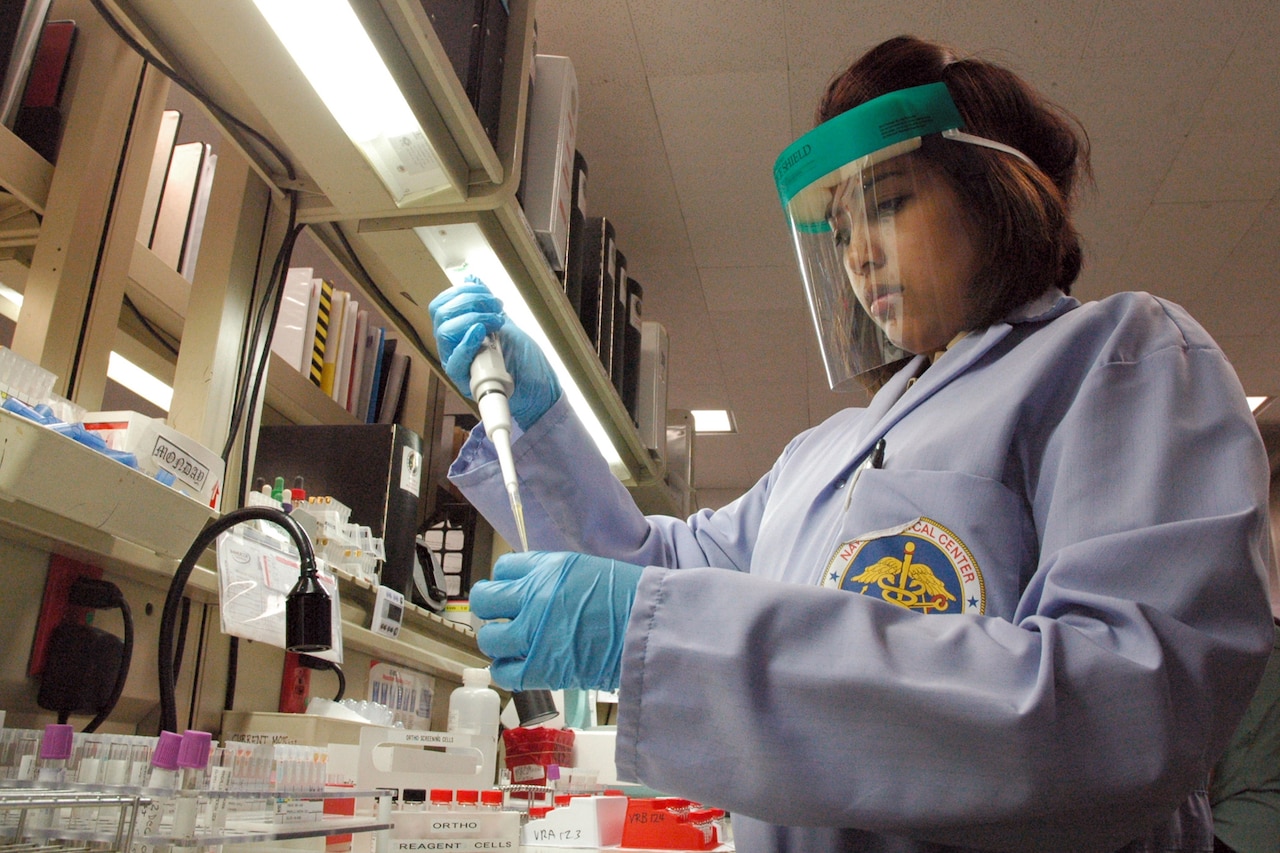
"If a donor believes they meet these requirements, they must first contact the local blood donor center before coming in, and if they qualify, set up an appointment," Army Col. Jason Corley, Army Blood Program director, said. "Once set up, the donor must bring the required documentation and undergo the standard donation procedure. Final determination will be made by the medical director or designee."
ASBP Centers Collecting Convalescent Plasma
- Armed Services Blood Bank Center, Walter Reed National Military Medical Center, Bethesda, Maryland;
- Naval Medical Center Portsmouth Blood Donor Center, Portsmouth, Virginia;
- Fort Bragg Blood Donor Center, Fort Bragg, North Carolina;
- Kendrick Memorial Blood Center, Fort Gordon, Georgia;
- Sullivan Memorial Blood Center, Fort Benning, Georgia;
- Blood Donor Center, Keesler Air Force Base, Mississippi;
- Lackland Air Force Base Armed Services Blood Bank Center, Joint Base San Antonio-Lackland, Texas;
- Robertson Blood Center, Fort Hood, Texas;
- Akeroyd Blood Donor Center, Fort Sam Houston, Texas;
- Fort Bliss Blood Donor Center, Fort Bliss, Texas;
- Naval Medical Center San Diego Blood Donor Center, San Diego, California;
- Armed Services Blood Bank Center – Pacific Northwest, Joint Base Lewis-McChord, Washington;
- Tripler AMC Blood Donor Center, Tripler Army Medical Center, Hawaii;
- Naval Hospital Blood Donor Center, Guam; and
- Armed Services Blood Bank Center Europe, Landstuhl Regional Medical Center, Germany
More Information
Armed Services Blood Program
COVID-19-specific page
Blood Drive and Donor Registration
Facebook: militaryblood
Twitter: @militaryblood
Instagram: @usmilitaryblood
Agile Wolf
Airmen descend onto an airfield at Ramstein Air Base, Germany, May 26, 2020, during Agile Wolf, an exercise designed to sharpen tactics, techniques and procedures for establishing expeditionary airfields on demand.
